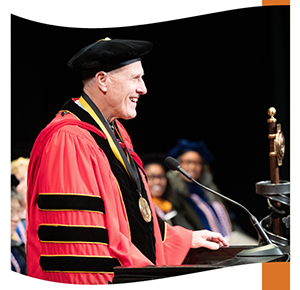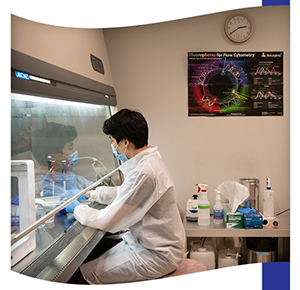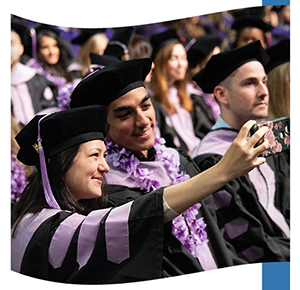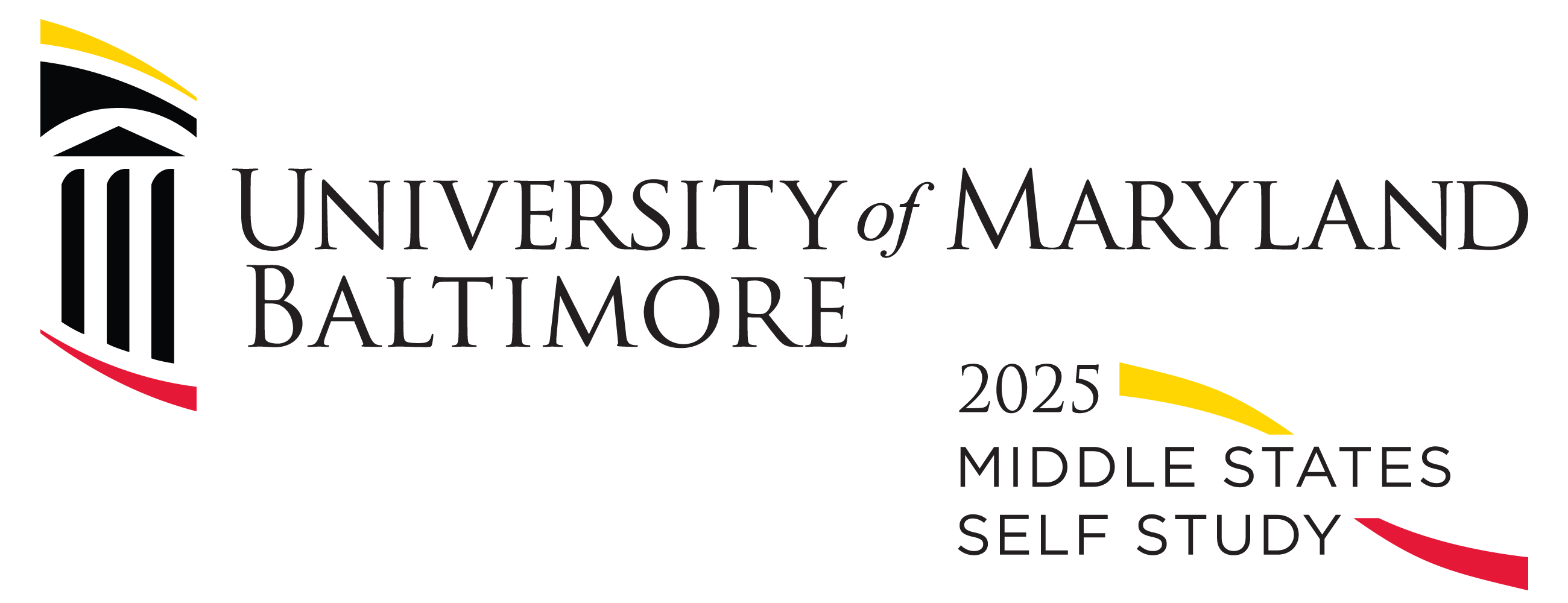Read the Full Executive Summary
 Established in 1807, the University of Maryland, Baltimore (UMB) is Maryland’s public health, law, and human services university, dedicated to excellence in education, research, clinical care, and public service. UMB is located on 65 acres on the westside of downtown Baltimore.
Established in 1807, the University of Maryland, Baltimore (UMB) is Maryland’s public health, law, and human services university, dedicated to excellence in education, research, clinical care, and public service. UMB is located on 65 acres on the westside of downtown Baltimore.
In February 2025, UMB was officially designated a Research 1 (R1) Institution by the Carnegie Classification of Institutions of Higher Education. This recognition acknowledges UMB’s long-standing excellence in research, particularly driven by our School of Medicine. R1 status is a significant milestone that highlights our commitment to groundbreaking research and development, attracts funding, and enhances UMB’s global reputation. UMB has long been a research powerhouse, and this designation reflects the extensive contributions of our faculty, researchers, and students.
To achieve R1 status, universities must spend at least $50 million on research and development in a year and award at least 70 research doctorates each year. UMB first spent more than $50 million annually on research in 1987. In Fiscal Year 2024, UMB secured more than $638 million in research awards from both for-profit and nonprofit sponsors across our seven schools, which continue to drive innovative solutions to address societal challenges, improve health, and contribute to the global good.
UMB offers doctoral, master’s, baccalaureate, and certificate programs and confers more than half of the health care, human services, and law professional degrees in Maryland each year. In addition to Middle States Commission on Higher Education accreditation, many other schools/programs participate in their own self-study processes as part of their professional accreditation. This distinctive feature of UMB yields a rich culture of self-appraisal across the institution.
UMB enrolls 6,636 students, of which 960 are upper-division undergraduates in nursing, dental hygiene, and medical technology. A majority of students are enrolled in UMB’s professional schools — Dentistry, Law, Medicine, Nursing, Pharmacy, and Social Work — and the interdisciplinary School of Graduate Studies. Across UMB’s primary entry-into-practice programs, the 100 percent time-to-degree-graduation rate averages 84 percent, and the 150 percent time-to-degree graduation rate averages 92 percent. UMB takes pride in the fact that students generally complete at the same rate regardless of race, gender, or ethnicity.
As a public state institution, UMB’s institutional assessment philosophy is significantly influenced and shaped by drivers at the state, University System of Maryland, and University levels. To be sure, much of the assessment that UMB engages in is mandated, particularly at the state level. However, instead of approaching its assessment and reporting under these programs as simply a compliance activity, UMB has adopted a holistic institutional assessment model that is responsive and accountable to its stakeholders, advances the University’s mission and vision, and utilizes assessment data and information to evaluate the effectiveness of its programs. This multilevel assessment program allows UMB to create clear goals and set a course for the future as the University nurtures a culture of quality and maintains a commitment to excellence in education.
The mission, core values, and strategic plan guide institutional stakeholders in planning and decision-making, encourage scholarly and creative activity at levels and types appropriate to UMB, and drive academic program and curricular development. Goals that focus on student learning and related outcomes are supported by administrative, educational, and student support programs and services as described in detail for Standards III, IV, and V.
UMB’s schools and units use high-level institutional outcomes to identify their own specific, measurable, achievable, relevant, and time-bound (SMART) goals that are directly aligned with UMB’s 2022-2026 Strategic Plan. The Strategic Plan Implementation Management System is used to assist schools and individual units in aligning their goals with University priorities and tracking progress in achieving goals.
UMB’s schools and units use high-level institutional outcomes to identify their own specific, measurable, achievable, relevant, and time-bound (SMART) goals that are directly aligned with UMB’s 2022-2026 Strategic Plan. The Strategic Plan Implementation Management System is used to assist schools and individual units in aligning their goals with University priorities and tracking progress in achieving goals.
The themes of the 2022-2026 Strategic Plan are:
- Accountability and Integration of Core Values
- Student Growth and Success
- University Culture, Engagement, and Belonging
- Innovation and Reimagination
- Community Partnership and Collaboration
- Global Engagement and Education
Resource allocation of UMB’s $1.67 billion annual budget is tied to both the core values and the strategic outcomes. Requests for funding are vetted by the Funding Model Workgroup composed of deans, vice presidents, and administrative deans. A thoughtful and intentional budgeting process ensures that resources and revenue streams are in place to support the UMB’s mission and goals.
 The University of Maryland, Baltimore (UMB) has engaged in a nearly three-year Middle States accreditation process that will continue in April 2025 with a four-day visit by an evaluation team from the Middle States Commission on Higher Education (MSCHE).
The University of Maryland, Baltimore (UMB) has engaged in a nearly three-year Middle States accreditation process that will continue in April 2025 with a four-day visit by an evaluation team from the Middle States Commission on Higher Education (MSCHE).


 Established in 1807, the University of Maryland, Baltimore (UMB) is Maryland’s public health, law, and human services university, dedicated to excellence in education, research, clinical care, and public service. UMB is located on 65 acres on the westside of downtown Baltimore.
Established in 1807, the University of Maryland, Baltimore (UMB) is Maryland’s public health, law, and human services university, dedicated to excellence in education, research, clinical care, and public service. UMB is located on 65 acres on the westside of downtown Baltimore. Statement of the Standard
Statement of the Standard Statement of the Standard
Statement of the Standard An institution provides students with learning experiences that are characterized by rigor and coherence at all program, certificate, and degree levels, regardless of instructional modality. All learning experiences, regardless of modality, program/pace schedule, level, and setting, are consistent with higher education expectations.
An institution provides students with learning experiences that are characterized by rigor and coherence at all program, certificate, and degree levels, regardless of instructional modality. All learning experiences, regardless of modality, program/pace schedule, level, and setting, are consistent with higher education expectations. Statement of the Standard
Statement of the Standard Statement of the Standard
Statement of the Standard Statement of the Standard
Statement of the Standard Statement of the Standard
Statement of the Standard